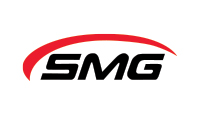January 7, 2015
EPA Announces New Federal Regulations for Disposal of Coal Ash from Coal-Fired Power Plants
POSTED BY
William Shane, P.E.TAGGED
SHARE
On December 19, 2014, the EPA announced the first federal regulations governing the disposal of coal ash in impoundments and landfills. Coal ash is one of the largest types of industrial wastes generated in United States, with nearly 110 million tons produced in 2012.* Coal ash is produced from the burning of coal in coal-fired power plants and includes a number of by-products, such as fly ash, bottom ash, boiler slag, flue gas desulfurization material, and scrubber residues. The major environmental concern with coal ash is that it contains the contaminants mercury, cadmium, and arsenic.
The case for federal action is based on several high profile spills, highlighted by the failure of a TVA coal ash pond in Kingston, Tennessee. Approximately 3.1 million cubic feet of fly ash and water were released on to land adjacent to the plant and into the nearby Clinch and Emory Rivers on December 22, 2008.
The new regulation was established under Subtitle D of the Resource Conservation and Recovery Act (RCRA) and addresses the following issues:
- Closure of surface impoundments and landfills that do not meet engineering and structural standards.
- Regular inspections of structural safety of surface impoundments.
- Restrictions on the location of new surface impoundments and landfills so they cannot be built in wetlands and earthquake zones.
- Cleanup and closure of unlined surface impoundments that are polluting groundwater.
- Fugitive dust controls to reduce windblown coal ash dust.
- Liner barriers for new units and proper closure of existing units.
*40 percent of all coal ash produced in 2012 was recycled for beneficial reuse.
